Mist Eliminator CFD Simulation, ANSYS Fluent
$140.00 Student Discount
- In this project, we have simulated the performance of a Mist Eliminator using ANSYS Fluent software.
- Three-dimensional modeling was done using Design Modeler software.
- The meshing of the model has been done using ANSYS Meshing software and the element number equals 2,062,734.
- The Discrete Phase Model (DPM) is used to model water-liquid particles in transient mode.
- The Realizable K-epsilon model is selected for turbulence characteristics of fluid flow.
To Order Your Project or benefit from a CFD consultation, contact our experts via email ([email protected]), online support tab, or WhatsApp at +44 7443 197273.
There are some Free Products to check our service quality.
If you want the training video in another language instead of English, ask it via [email protected] after you buy the product.
Description
Description
Mist Eliminators are specifically engineered to extract impurities from process air emissions that evolve in the form of mist droplets. These impurities may consist of oil mist, machine coolant mist, chromic acid mist, sulfuric acid mist, and various other types of entrained mist.
As part of the project, a small amount of humid air (approximately 1%) is entered into a sophisticated mist eliminator device. The air and water droplets that are assumed to have a diameter of 0.0001 m, have a mass flow rate of 1.5132104 kg/s and 0.015 kg/s, respectively. The speed of air is 6.4 m/s and it drives the water particles into the domain.
Mist Eliminators work by utilizing composite mesh or vane plate surfaces to separate the mist droplets from gas streams through mechanical impingement and inertial impaction. The large surface area coupled with a small volume allows for the collection of liquid without substantially impeding the flow of gas.
These innovative devices work by collecting the droplets upon impact, without significantly slowing down the gas flow. Thanks to their compact size and large surface area, Mist Eliminators are a reliable solution for eliminating unwanted droplets in gas. So, by defining the trap boundary condition for mist eliminator plates, the flow behavior when it passes through these surfaces will be shown.
The geometry of the solution is designed in ANSYS Design Modeler. Afterward, the elements are generated in ANSYS Meshing software. The mesh file then is imported into ANSYS Fluent and the type of the elements changed to polyhedra and the final number of elements reached 2,062,734.
Methodology
The Discrete Phase Model (DPM) is used to model water-liquid particles in transient mode, while the air behavior is assumed to be steady-state. The realizable K-epsilon model is selected for turbulence characteristics of fluid flow and the effects of gravity are considered in the Z direction with a value of -9.81 m/s2.
Conclusion
The contour, vector, pathlines, and particle tracking graphical results are extracted from ANSYS Fluent software. Based on the velocity contour, it is evident that air enters the domain and rotates both above and below the inlet boundary condition. After coming into contact with the mist eliminator plates, it passes along them and exits the domain via the outlet boundary condition with a greater velocity. This behavior is more easily seen in the air pathlines view.
Finally, the animation file shows the movement of water droplets, which hit the mist eliminator plates and get trapped there.
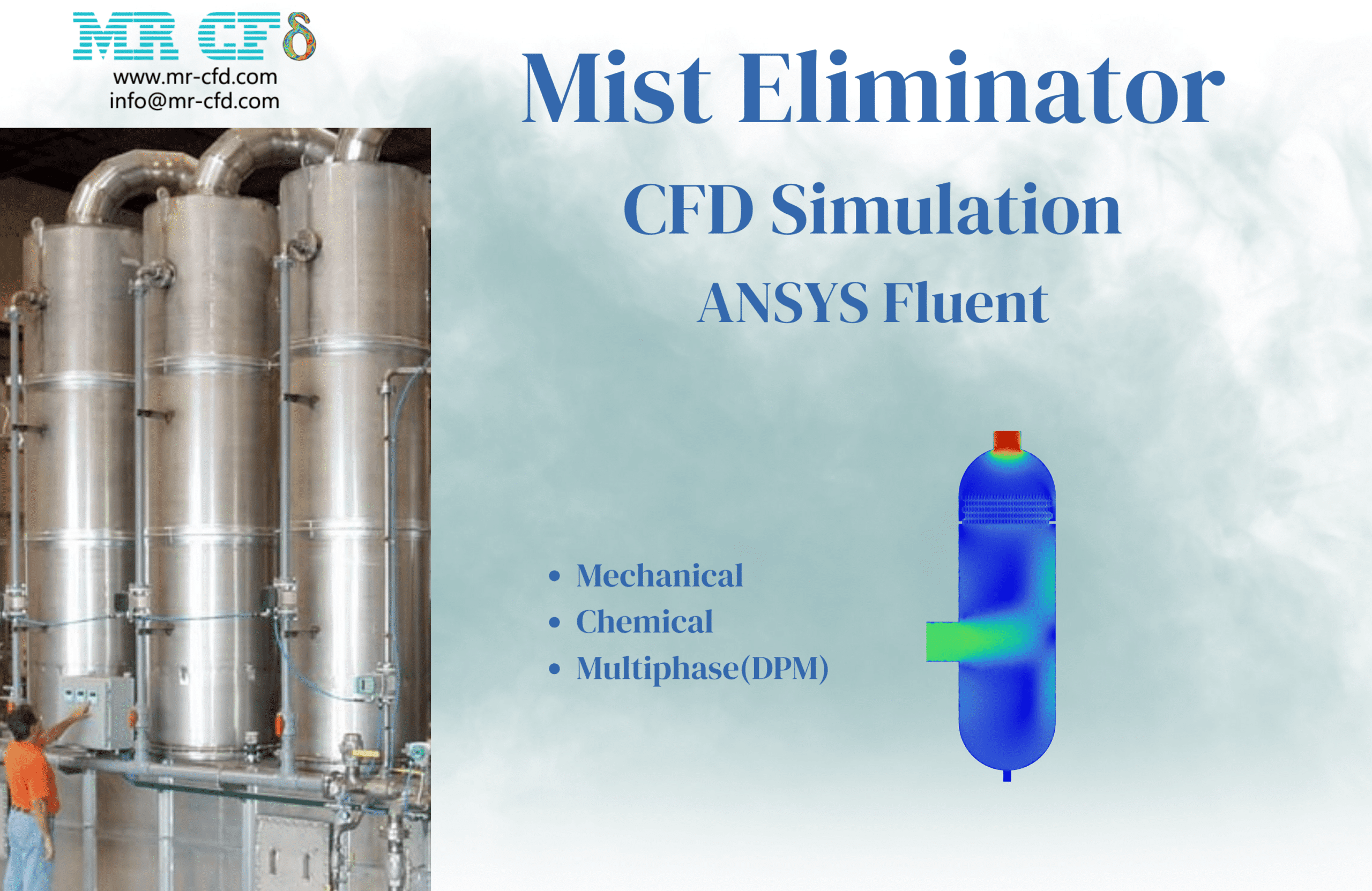
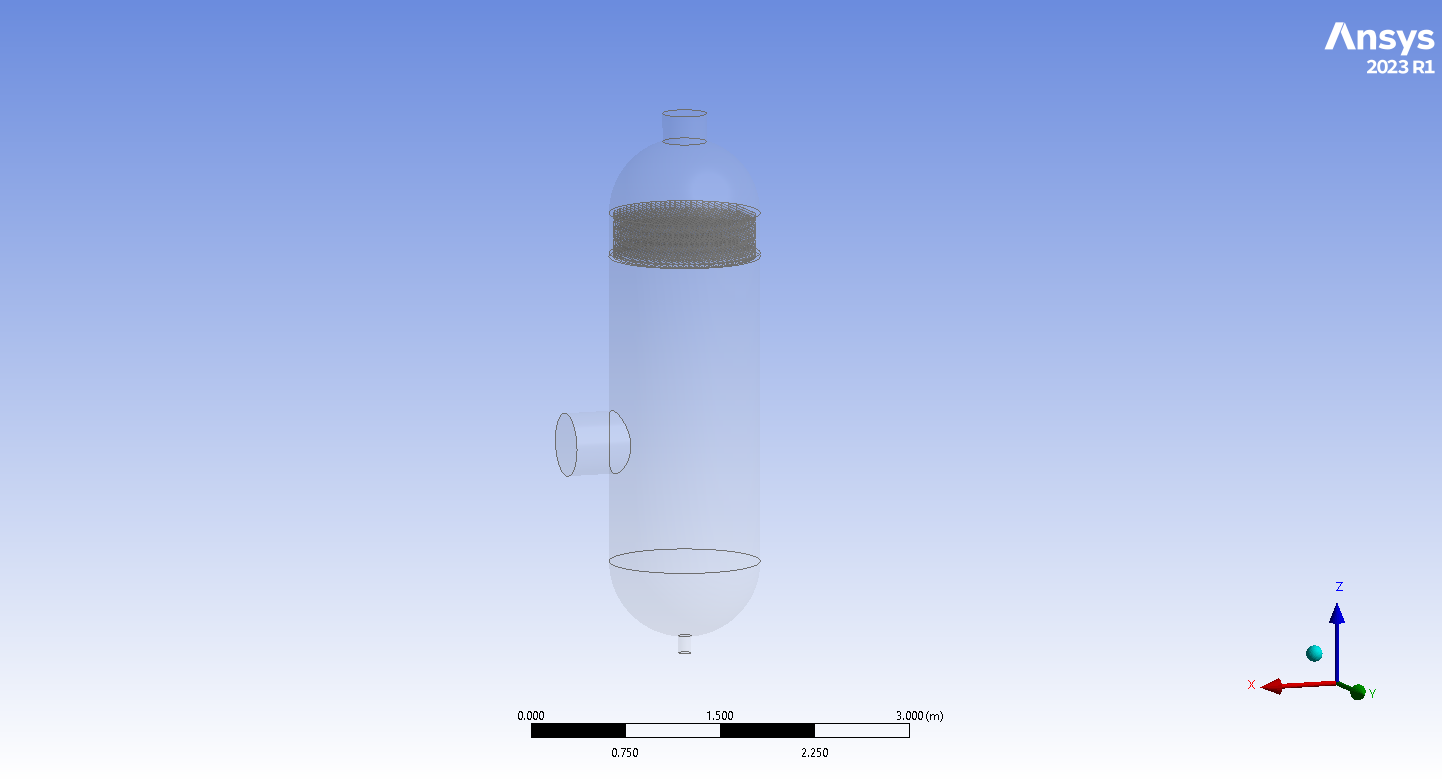
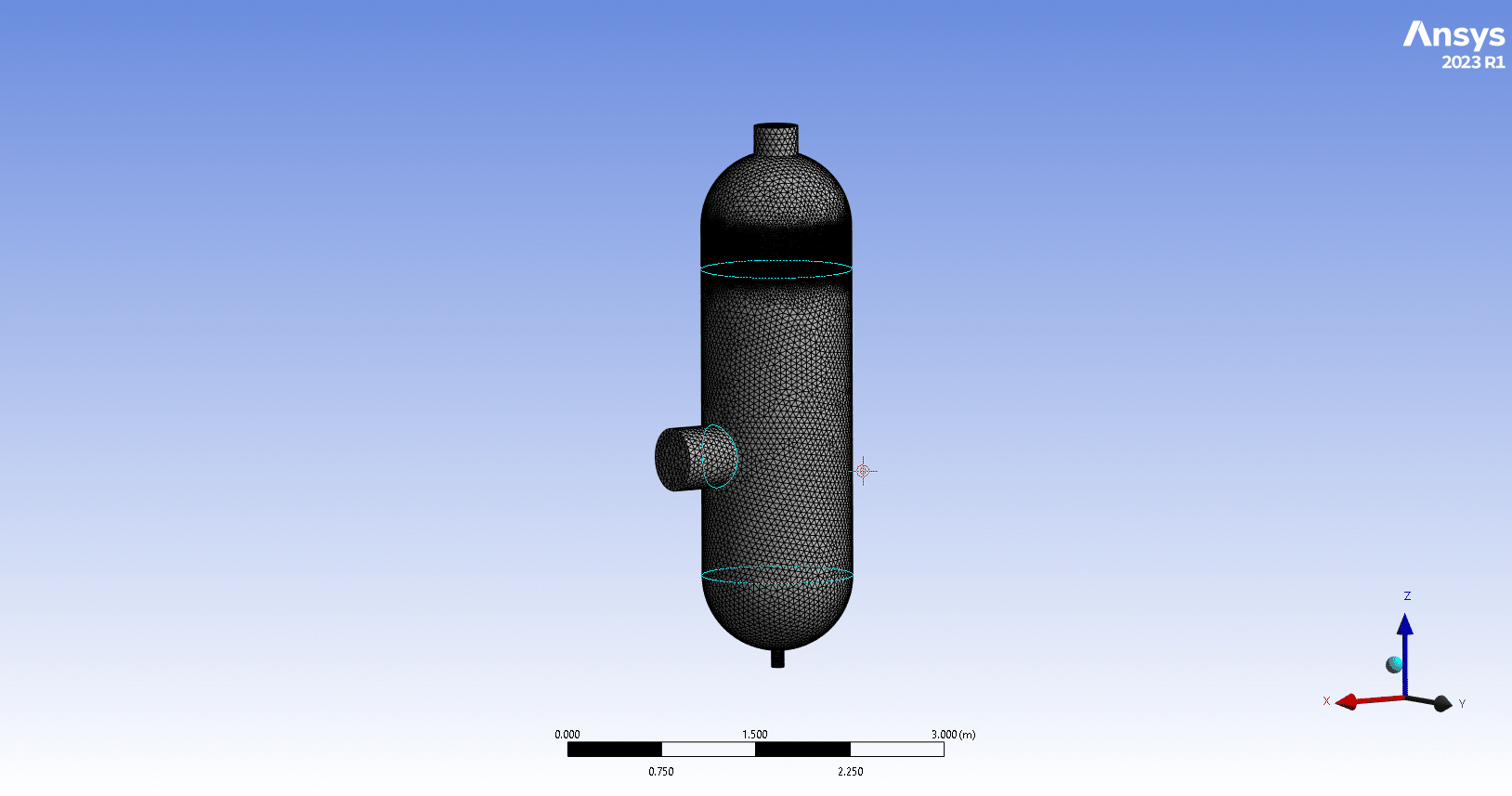
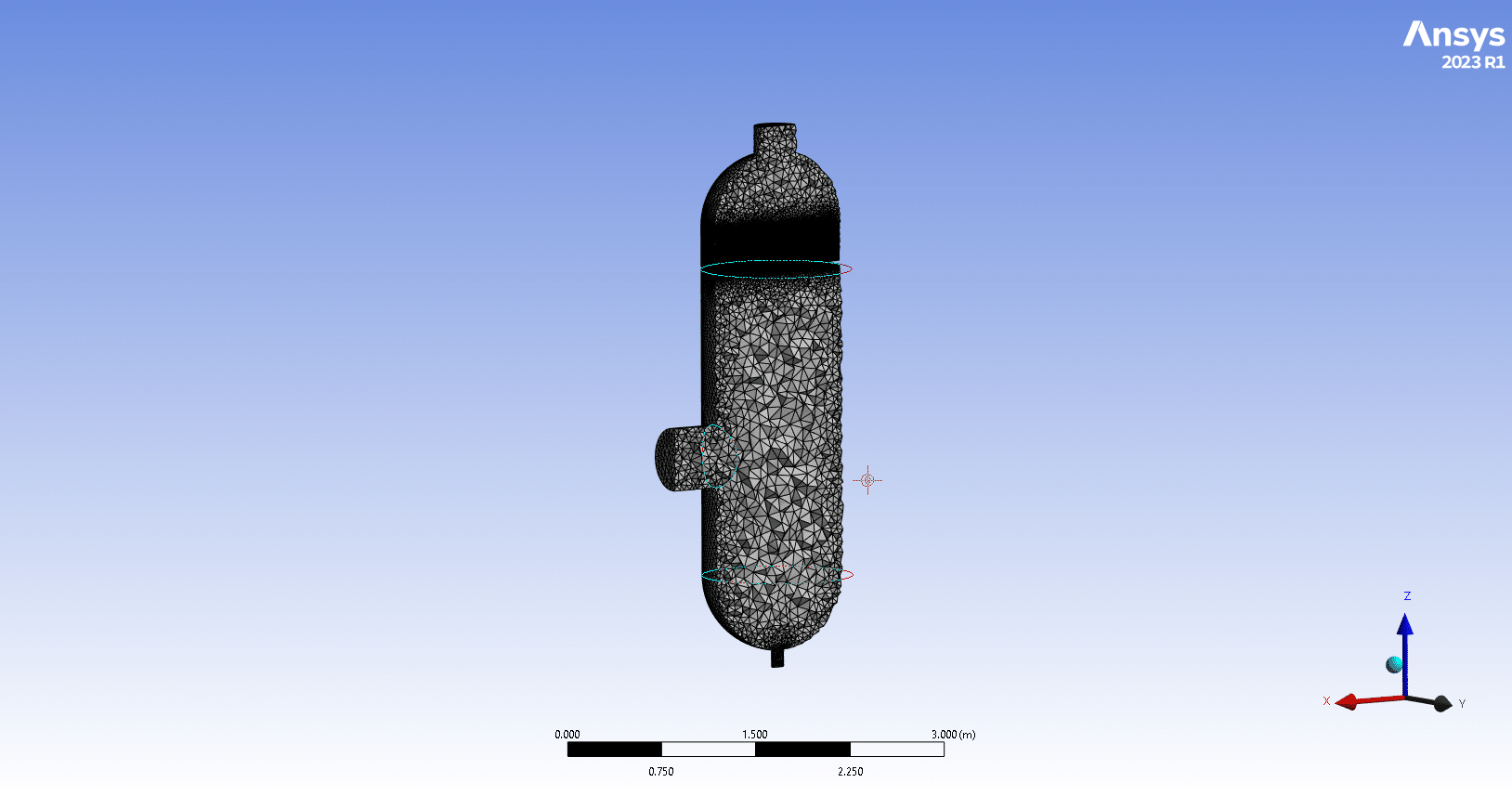

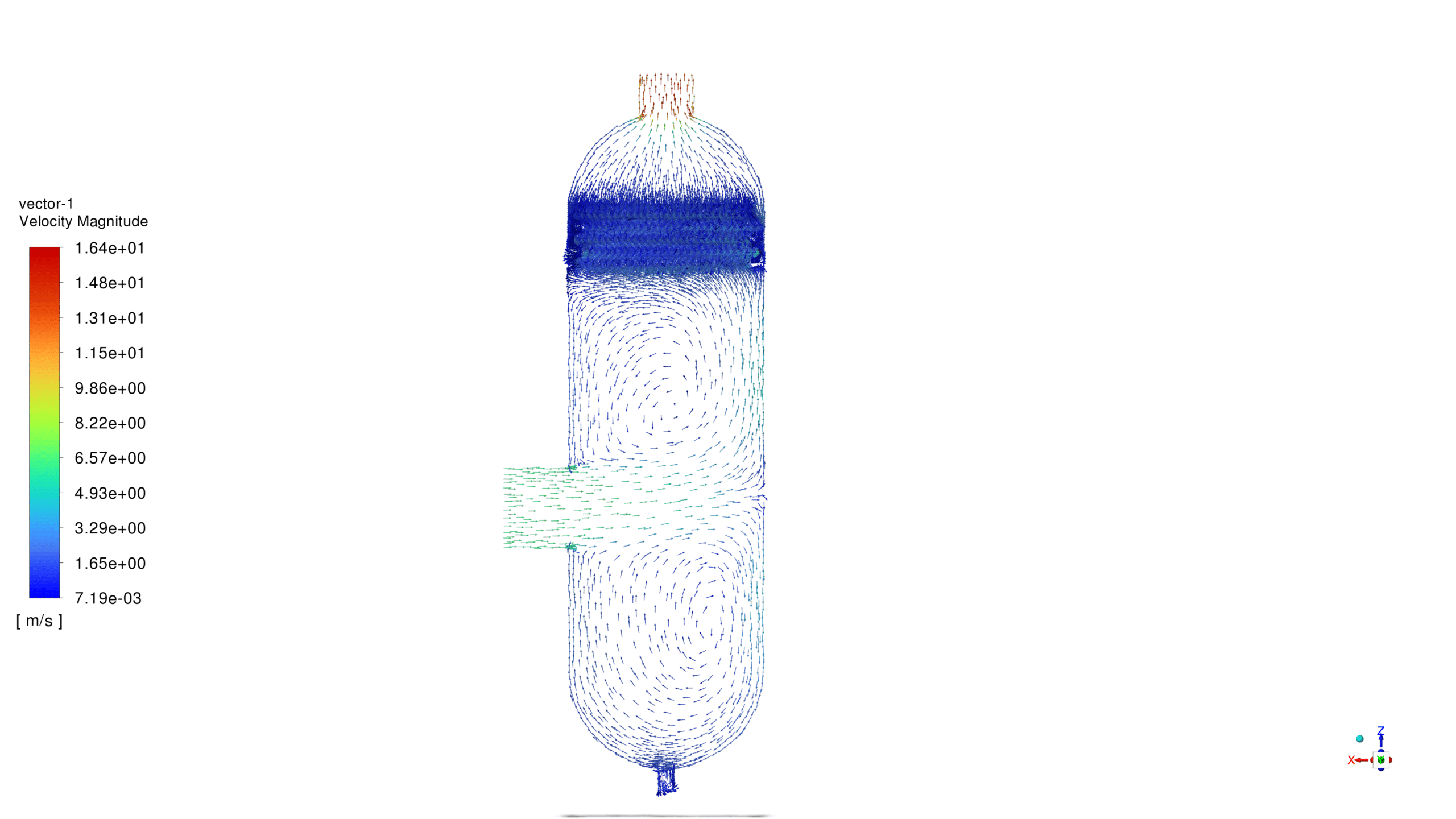
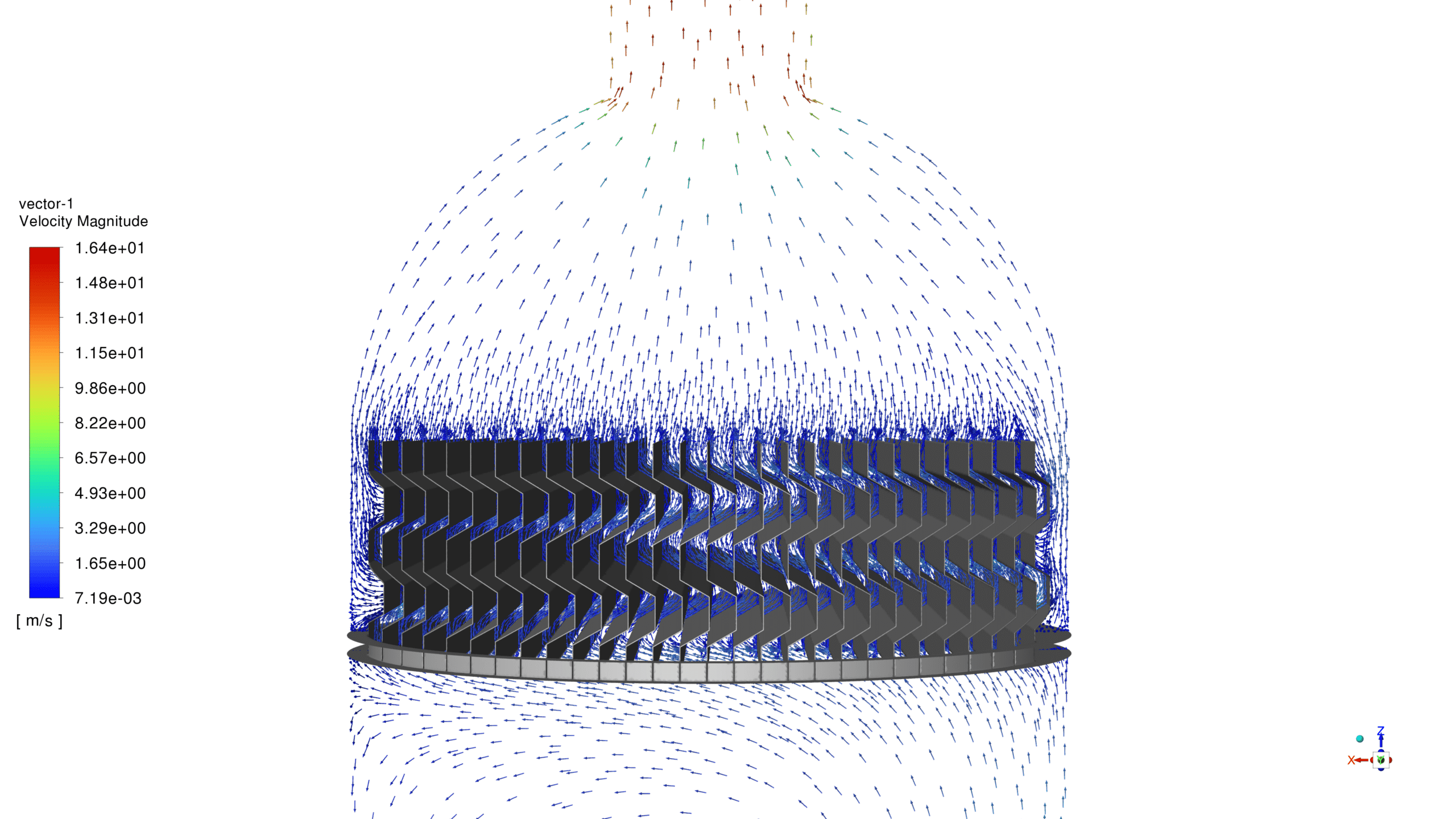
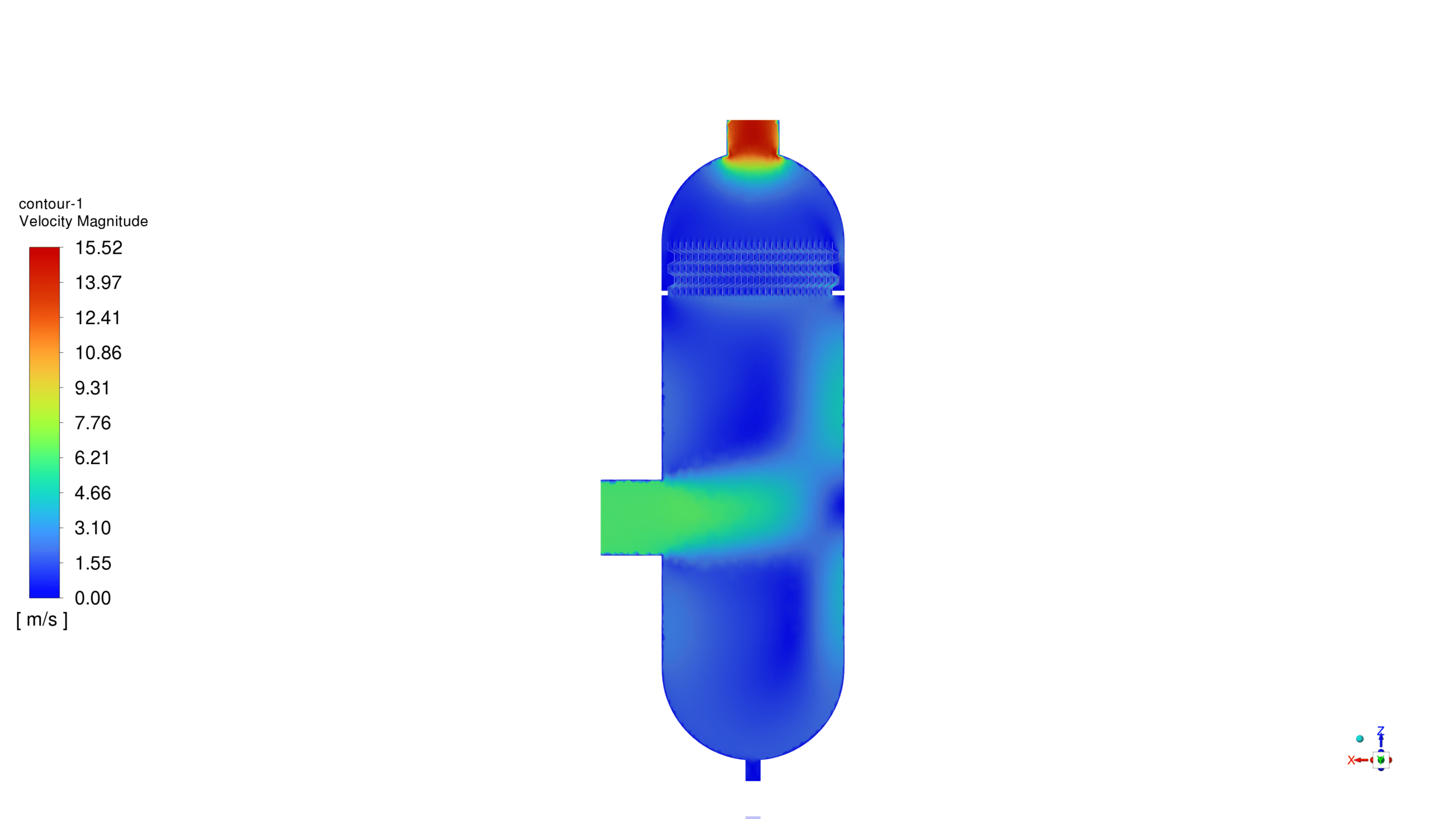
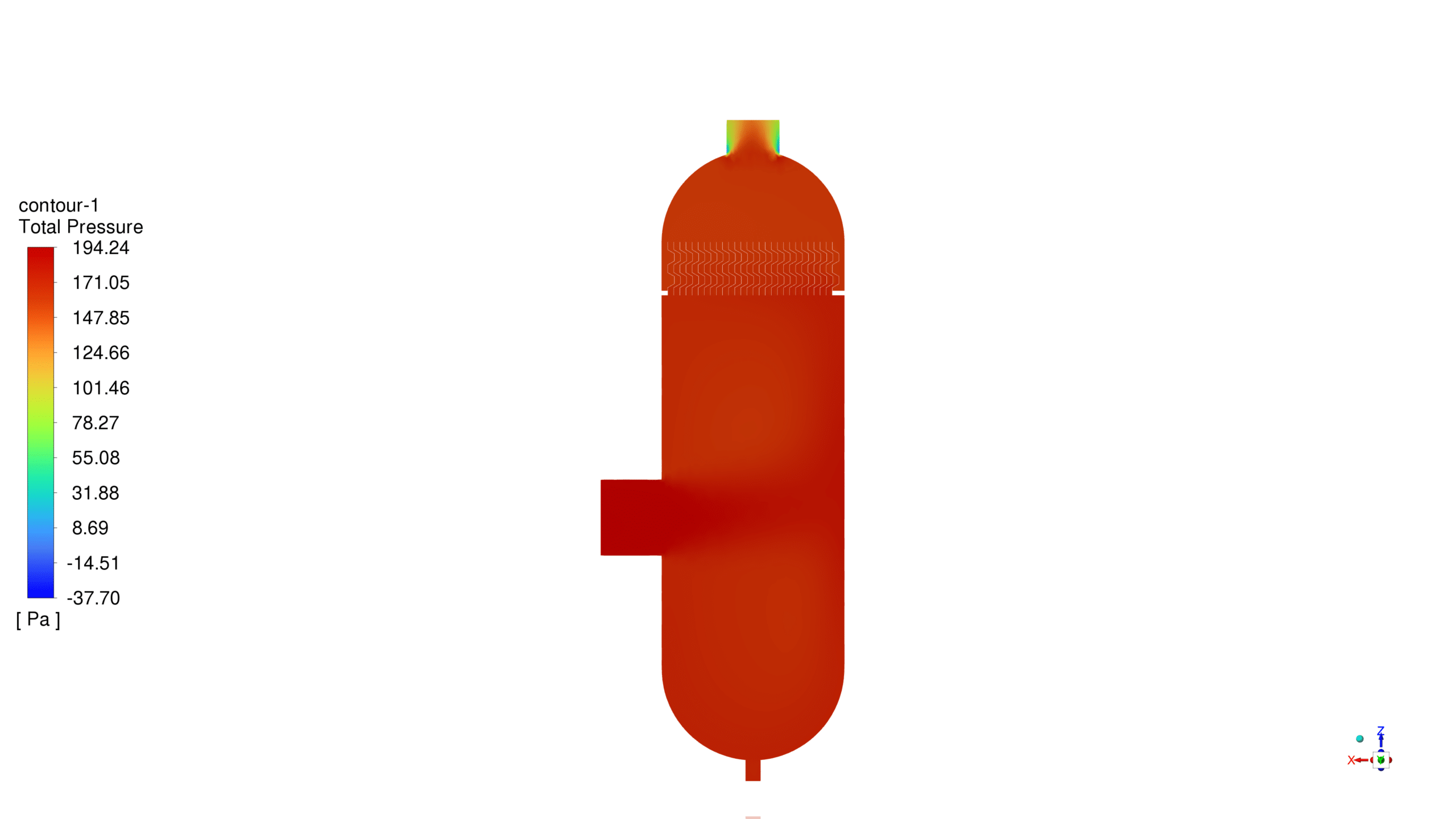

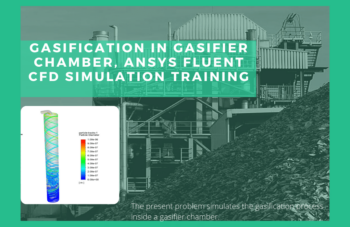
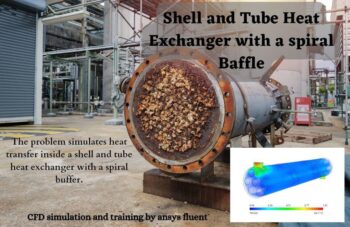
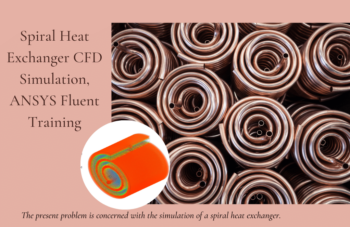

Mr. Marty Walker –
I’m curious about the temperature settings in this simulation. How is the temperature managed, and does the simulation take into account any heat transfer that might occur due to the collection of droplets on the mist eliminator plates?
MR CFD Support –
In this simulation, temperature management is focused on a consistent domain temperature suitable for the modeled real-world scenario with humidity and mist particles present. The simulation considers the heat transfer effects that typically occur when liquid droplets come into contact with a surface, and any temperature difference between the droplet and the plate would result in thermal exchange. To accurately simulate the effectiveness of Mist Eliminators in various industrial settings, ANSYS Fluent includes models to handle such heat transfer phenomena.
Ursula Hagenes –
I’m amazed by how you’ve managed to simulate mist eliminator performance realistically using ANSYS Fluent! It’s especially interesting to read about the use of the Discrete Phase Model for tracking water particles. The final rendering showing the path of air and the trapping of water droplets must be an insightful visual. Great job on that simulation!
MR CFD Support –
Thank you for your kind words and for recognizing the work that went into simulating the mist eliminator’s performance! We always strive for realism and accuracy in our simulations, so it’s rewarding to know that our efforts are appreciated. If you’d like to see more details or have further questions, please feel free to reach out to us.
Deion Pacocha –
I am thrilled with the level of detail in the particle tracking. The animation of the water droplets’ paths clearly shows their behavior upon impact with the mist eliminator plates. Great work!
MR CFD Support –
Thank you so much for your positive feedback! We’re delighted to hear that our simulation and the detailed animation provided you with a clear understanding of the mist eliminator’s functionality. Your satisfaction with our product is highly important to us. If you have any more questions or need further information, please don’t hesitate to reach out.
Mrs. Natasha Lubowitz MD –
I really enjoyed learning from the ‘Mist Eliminator CFD Simulation’ product on ANSYS Fluent! The intricate detail on how mist droplets are extracted from air flows was fascinating. The application of the Discrete Phase Model with polyhedral elements has enhanced my understanding of capturing the behavior of air and water particulates in such a complex system.
MR CFD Support –
Thank you for taking the time to write such a positive review. We are thrilled to hear that the ‘Mist Eliminator CFD Simulation’ has provided you with a deeper understanding of the extraction process within these systems. It’s great to know that the application of the Discrete Phase Model and the detail on polyhedral element usage contributed to your learning experience. We appreciate your feedback!
Roman Bayer –
I am incredibly impressed with the realism and accuracy of the mist eliminator CFD simulation using ANSYS Fluent. The integration of airflow dynamics with particle tracking is fantastic and the detailed results are invaluable for optimizing mist eliminator designs. Great work!
MR CFD Support –
Thank you for your kind words! We’re thrilled to hear that the simulation met your expectations and provided the detail needed for your project. Our goal is to deliver accurate and realistic results that our customers can rely on for optimizing their designs. If you have any further questions or need assistance with another project, feel free to reach out!
Victor Quigley –
This tutorial impressed me with its focus on real-world applications. I learned so much about the physics behind mist eliminators and how to approach complex simulations of droplet behavior. The detail in defining the trap boundary condition and using a high-fidelity mesh helped solidify my understanding greatly.
MR CFD Support –
Thank you so much for your kind review! We’re thrilled to know that our tutorial on Mist Eliminator CFD simulation using ANSYS Fluent has deepened your understanding of both the physics involved and the simulation process. If you have any more feedback or require further insight into CFD applications, do not hesitate to reach out!
Willie Robel V –
Can the method applied in this simulation be used to evaluate other types of mist than the ones mentioned, like paint mist or other chemical mists?
MR CFD Support –
Yes. Mist eliminators designed using the principles demonstrated in this simulation can be engineered to target various mists, including paint mists or other chemical mists. However, one may need to adjust the parameters and materials to suit the specific properties and behaviors of different chemicals.
Mr. Napoleon Bartoletti V –
The results sound quite comprehensive! Going through the velocity and air pathlines views seems very helpful for understanding the flow behavior. Can these graphical results be used to optimize the design of current mist eliminators?
MR CFD Support –
Absolutely! The graphical results provide valuable insights into the flow pattern and the efficiency of the mist eliminator in terms of trapping the water droplets. Analyzing these results can certainly aid in optimizing the design by identifying potential areas for improvement like pressure drop reduction or enhancing droplet capture. Engineering decisions can, hence, be made based on the CFD simulation outcomes to further refine mist eliminator designs for better performance.
Miss Leonora Kessler IV –
I was thrilled with the detailed explanation of Mist Eliminators and their simulation process. The use of DPM and realizable K-epsilon models to accurately capture the interaction between air and water droplets is impressive!
MR CFD Support –
Thank you for your positive feedback! We’re delighted to hear that the explanation of the Mist Eliminator simulation process and the use of specialized modeling approaches met your expectations. We strive to provide accurate and detailed simulations to help understand these complex processes. If you have further questions or need assistance in future simulations, feel free to reach out!
Victor Hickle –
The animation of water droplet movements was incredibly helpful! This simulation has clearly demonstrated the efficiency of the mist eliminator.
MR CFD Support –
Thank you for your kind words! We’re delighted to hear that the animation file provided a clear understanding of the water droplet dynamics with the mist eliminator. It’s always our goal to ensure that our simulations are as insightful and user-friendly as possible. We appreciate your feedback!
Damion O’Kon –
I am highly impressed by the level of detail in the Mist Eliminator CFD simulation, particularly the realistic approach taken to simulate the behavior of air and water particles. The use of the Discrete Phase Model to track particle movement, and the polyhedral mesh for detailed resolution, sounds remarkably sophisticated. Great work on employing these advanced methods to achieve accurate results!
MR CFD Support –
Thank you for such a positive review! We’re glad to hear that the details and methodology of the Mist Eliminator CFD simulation have impressed you. Our goal is to provide accurate and detailed simulations to aid in understanding complex systems. We appreciate your recognition of the effort put into employing advanced modeling techniques such as the Discrete Phase Model and polyhedral meshing.
Dr. Cyril Conn PhD –
Thank you for the detailed CFD simulation of the Mist Eliminator. The visual representation of airflow and water droplet tracking was especially helpful in understanding the efficiency of the Mist Eliminator design.
MR CFD Support –
We are very pleased to hear that the visualization aspects of the CFD simulation were helpful to you. Thank you for taking the time to share your positive experience with our Mist Eliminator simulation product!